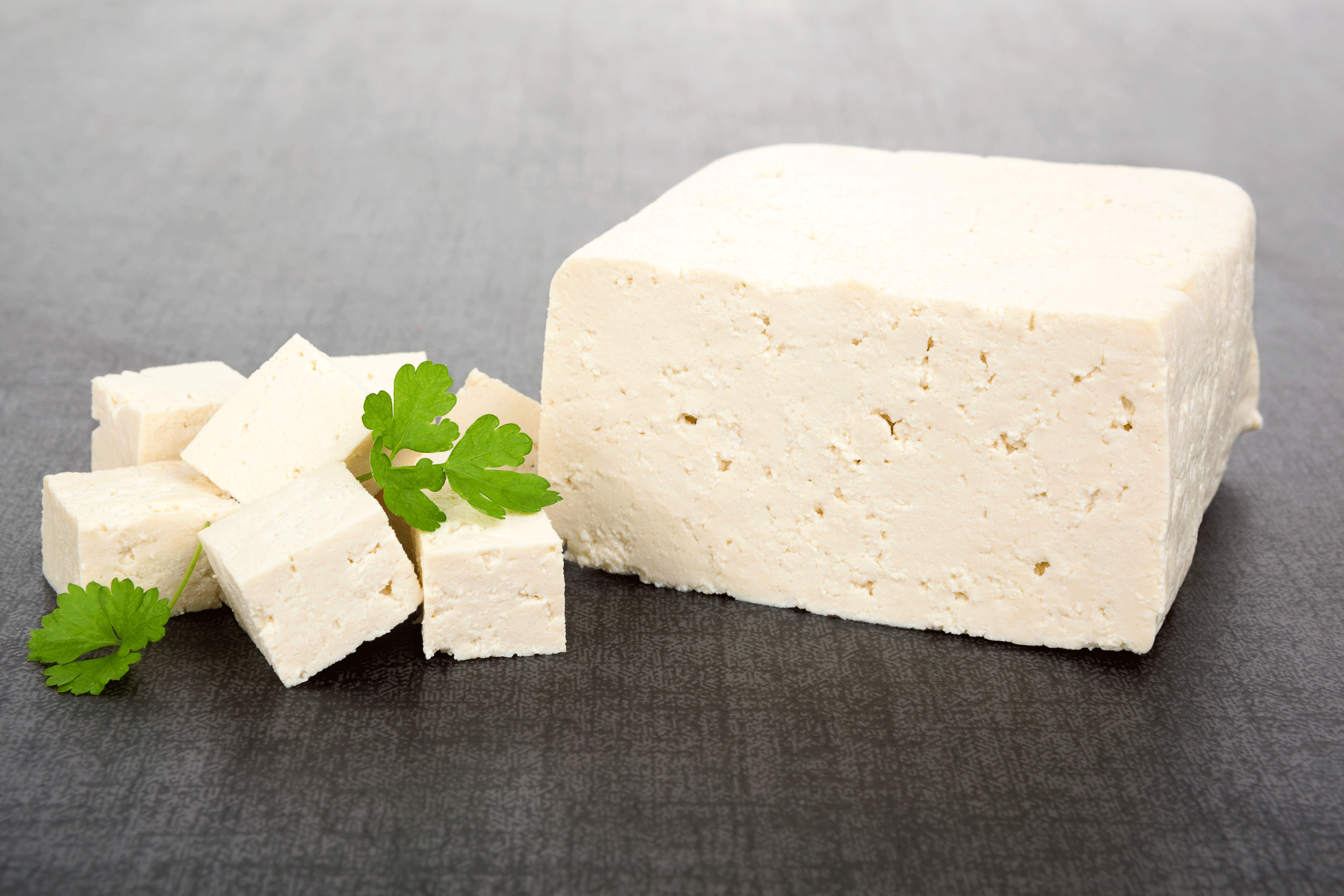Pesticides Found in GM Soy; Vermont Orders Labels
Air Date: Week of May 2, 2014

The majority of processed foods in the US are made in part with genetically modified corn, soy, or sugar beets. GM soy has been shown to contain the pesticide glyphosate. Starting in July of 2016 all genetically modified foods sold in Vermont will have to be labeled as such.(bigstockimages.com)
A recent study found “extreme levels” of the herbicide glyphosate, linked to birth defects and Non-Hodgkin’s Lymphoma, in genetically modified soybeans farmed in Iowa. The US federal government doesn’t recognize a material difference between GM and non-GM crops but Vermont will require all genetically modified foods carry labels from 2016. Scientist Michael Hansen of Consumers' Union discusses GM food safety with host Steve Curwood.
Transcript
CURWOOD: From the Jennifer and Ted Stanley Studios in Boston and PRI, this is Living on Earth. I’m Steve Curwood. When transgenic food came on the market, the makers claimed it was substantially the same as natural food, so it didn’t need to be regulated. But a recent Norwegian-led study in Iowa found that soy genetically modified to tolerate the herbicide glyphosate had considerable levels of the chemical’s residues at harvest, compared to conventional soybeans, which had none. Some 85 percent of corn, 93 percent of soybeans, and 98 percent of sugar beets are genetically modified and many European countries either ban such crops or requiring labeling. Well, with evidence mounting that GM foods are not the same as conventional ones, Vermont has become the first state to require labels on all food products that contain GM ingredients. Here to discuss the Vermont law and the new study of soy is Michael Hansen, Senior Staff Scientist at Consumers Union.
HANSEN: What the researchers basically found is...they tested 30 sets of samples. There was 11 from organic, 10 from conventional fields, and then 10 from the Roundup ready [pesticide-sprayed] fields. What they found is with the engineered soybeans every single sample had residues of both glyphosate and AMPA (Aminomethylphosphonic acid), which is its main breakdown product, and they averaged about four parts per million and it was undetectable in either the organic or conventional.

Starting in July of 2016 all genetically modified foods sold in Vermont will have to be labeled as such. (bigstockimages.com)
CURWOOD: Now Monsanto, the company that makes Roundup, once called the amount of glyphosate found in these soybeans “extreme levels”. Why did they make that statement, and what would they say now?
HANSEN: Well, they made that statement back in 1999, and just so you know, there was...what they found in this study was, well, glyphosate was about 3.3 parts per million, and its breakdown product was 5.7. So total there was about nine parts per millon. And back in ’99, they said they would consider three or four parts per million to be excessively high levels. Since then, however, what’s happened is they’ve managed to get the levels increased. So in the United States, for example, the tolerance for soybeans is actually 20 parts per million.
CURWOOD: How dangerous are those amounts?
HANSEN: We don’t really know, although, there is increasing evidence that glyphosate is not the benign chemical that people thought it was. For example, last year, there was a study published that looked at just breast cancer cells that are sensitive to hormones, and they actually found incredibly low levels of glyphosate. We’re talking the parts per billion range, and also down to the parts per trillion range, there were an effect. That’s one thing. Second, there’s increasing evidence that glyphosate might cause birth defects, and it’s also been linked in epidemiology to Non-Hodgkins lymphoma.
CURWOOD: Michael Hansen, where is this GMO found in the market with these pesticide residues?

93% of soybeans grown in the US are genetically modified. GM soy tested in Iowa was found to contain the pesticide glyphosate. (bigstockphotos.com)
HANSEN: The engineered soy, or engineered corn, that’s in 70 to 80 percent of virtually all processed products. Anything that has either soybeans in it, or potentially high-fructose corn syrup, so in virtually any processed food, there’s chips, crackers, cookies, cereals, soft drinks. And if it’s soy: tofu, veggie burgers...almost anything that you can think of because corn and soy are in a lot of things.
CURWOOD: So how do federal regulators regard the issue of issue of glyphosates and GMOs more broadly?
HANSEN: Since the US doesn’t recognize a difference between conventional breeding and genetic engineering, what they say is if we just look at the plants and they’re “substantially equivalent” then there’s no reason to do a safety study or even label them because they’re the same. Presently the EPA and regulators consider glyphosate fairly benign, so they say that data justifies it’s a safe level to have it up to 20 parts per million in soy beans, for example.
CURWOOD: Aside from the pesticide residues, what differences, if any, did the study find between GMO, that is, engineered soybeans, and those are grown conventionally or organically?
HANSEN: Well, what they did find is the organic soybeans had the healthiest nutritional profile. There was actually more sugars and significantly more total protein, zinc, and less fiber in the organic soybeans compared to either the conventional or the GM soy.
CURWOOD: So, does that mean they are not substantially the same?
HANSEN: That’s correct. Well, the organic were significantly different in nutritional qualities compared to either the conventional or the engineered. But that could be because it’s a different variety, because often when you’re growing something organic it’s for a special market, so that market might actually have wanted a higher quality, more nutritious soybean, whereas conventional soy, most of that’s fed to animals, so it would depend. The organic market is probably going more for soy that might be used in human consumption.
CURWOOD: Michael Hansen, I want to turn now to news from Vermont, which recently became the first state in the country to require all food products containing GMO ingredients to be labeled as such. What do you see for the future of GMO foods in the US given the new Vermont law?

Soft drinks in the US are often made with high fructose corn syrup from GM corn. (Bigstockphoto.com)
HANSEN: Well, I think what’s important here is this Vermont law is going to go into effect in July of 2016, so in two years time. What this will do is, this will spur other states to potentially pass labeling laws, and then I think ultimately, that will spur action at the federal level.
CURWOOD: So, as I understand it, there are other states that have similar bills to Vermont’s new law working their way through the legislature. Can you tell me about a couple of those please?
HANSEN: Yes, the other states that have action is California. There’s a mandatory labeling bill that’s moving through the senate, and it’s going to be heard in the appropriations committee probably on May 12. In New York, there’s a bill that would require labeling, and it should be pointed out in Oregon it looks like there’s going to be a ballot initiative in the fall, another one like happened in California and Washington.
CURWOOD: With Vermont now passing a GMO labeling law, to what extent will manufacturers just have, well, one package.
HANSEN: I think ultimately where this is going to go because I think that very soon there will be a move toward having labeling at the national level, and I think Vermont is going to help spur that.
CURWOOD: Michael Hansen is Senior Staff Scientist at Consumers Union. Thanks so much for taking the time today.
HANSEN: You're welcome. Glad to do this.
Links
Living on Earth wants to hear from you!
Living on Earth
62 Calef Highway, Suite 212
Lee, NH 03861
Telephone: 617-287-4121
E-mail: comments@loe.org
Newsletter [Click here]
Donate to Living on Earth!
Living on Earth is an independent media program and relies entirely on contributions from listeners and institutions supporting public service. Please donate now to preserve an independent environmental voice.
NewsletterLiving on Earth offers a weekly delivery of the show's rundown to your mailbox. Sign up for our newsletter today!
 Sailors For The Sea: Be the change you want to sea.
Sailors For The Sea: Be the change you want to sea.
 The Grantham Foundation for the Protection of the Environment: Committed to protecting and improving the health of the global environment.
The Grantham Foundation for the Protection of the Environment: Committed to protecting and improving the health of the global environment.
 Contribute to Living on Earth and receive, as our gift to you, an archival print of one of Mark Seth Lender's extraordinary wildlife photographs. Follow the link to see Mark's current collection of photographs.
Contribute to Living on Earth and receive, as our gift to you, an archival print of one of Mark Seth Lender's extraordinary wildlife photographs. Follow the link to see Mark's current collection of photographs.
 Buy a signed copy of Mark Seth Lender's book Smeagull the Seagull & support Living on Earth
Buy a signed copy of Mark Seth Lender's book Smeagull the Seagull & support Living on Earth

